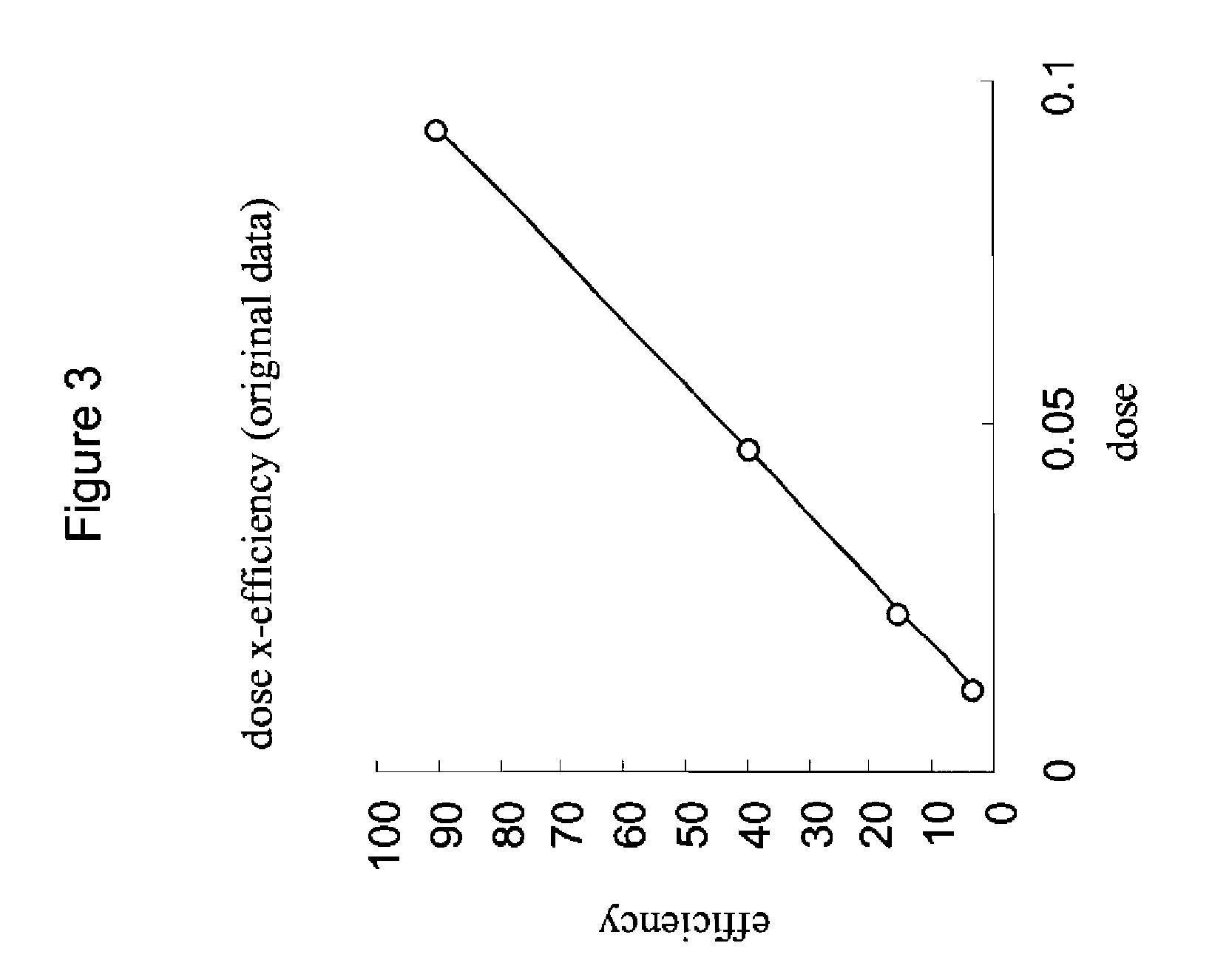Black Soybean Hull Extract, Method For Obtaining, and Use Thereof
a black soybean and extract technology, applied in the field of extracting methods and natural products, can solve the problems of unbalanced metabolism of oxygen-derived free radicals in the body, restricting the absorption of cholesterol by the body, and lowering the content of cholesterol in blood, so as to achieve the effect of evaluating the anti-oxidation capacity of bsh
- Summary
- Abstract
- Description
- Claims
- Application Information
AI Technical Summary
Benefits of technology
Problems solved by technology
Method used
Image
Examples
example 1
BSHE Preparation 1
[0063]One thousand g crushed black soybean hull (passing through a sieve with 60 meshes) as the raw material was extracted with 15 L of an aqueous solvent solution containing 0.08% pectase at 40° C. for two hours, then filtered. The extraction process was conducted twice and during the second extraction process, 10 L aqueous solution with the same pectase concentration was added. The extraction liquid from the two processes was combined (27 L) and then filtered through an ultrafiltration membrane until the resulting effluent was about 20 to 25 L. The effluent was subsequently resin separated and purified (at a flow rate of 20 to 40 L / h), and then eluted with 40-95% ethanol. The ethanol-eluting liquid was combined and then concentrated until the solid substance in the concentrated solution was equal to or more than 30%. Thirty-five g BSHE was obtained, and the yield was 3.5%.
[0064]The resulting BSHE product contained 32.54% cyanidin, 15.63% catechin, and 50.01% OPC,...
example 2
BSHE Preparation 2
[0071]One thousand g crushed black soybean hull (passing through a sieve with 90 meshes) as the raw material was extracted at 55° C. with 15 L of an aqueous solvent solution containing 0.2% cellulose. The temperature was maintained for two hours, and the extract was filtered. The extraction process was conducted twice, and during the second extraction process, 10 L of aqueous solution of the enzyme at the same concentration was added. The remaining steps were as described in Example 1. Forty-eight g of BSHE were obtained, and the yield was 4.8%. The resulting BSHE product contained: 12.52% cyanidin, 13.50% catechin, 54.01% OPC, and the total content of polyphenol was up to 80.03%.
example 3
BSHE Preparation 3
[0072]The preparation steps of Example 3 were the same as those of Example 1, except that the aqueous solution contained 0.08% cellulase instead of 0.08% pectase. Thirty-eight g of BSHE were obtained, and the yield was 3.8%. The resulting BSHE product contained: 27.43% cyanidin, 11.25% catechin, and 54.12% OPC, and the total content of polyphenol was up to 92.80%.
PUM
 Login to View More
Login to View More Abstract
Description
Claims
Application Information
 Login to View More
Login to View More - Generate Ideas
- Intellectual Property
- Life Sciences
- Materials
- Tech Scout
- Unparalleled Data Quality
- Higher Quality Content
- 60% Fewer Hallucinations
Browse by: Latest US Patents, China's latest patents, Technical Efficacy Thesaurus, Application Domain, Technology Topic, Popular Technical Reports.
© 2025 PatSnap. All rights reserved.Legal|Privacy policy|Modern Slavery Act Transparency Statement|Sitemap|About US| Contact US: help@patsnap.com



